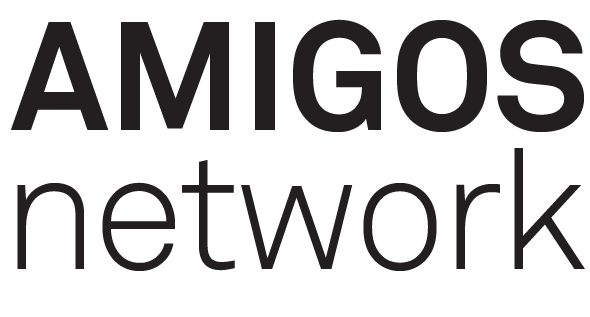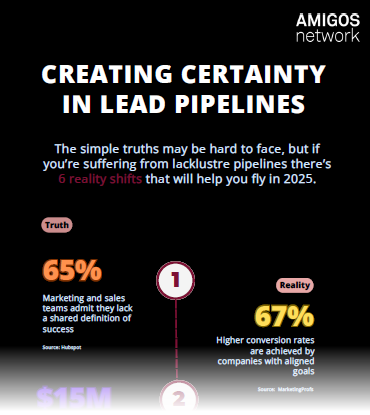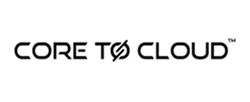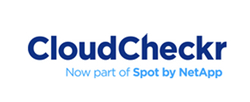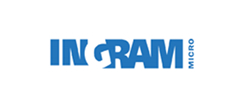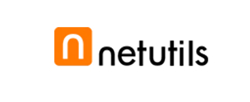Monday, May 06, 2024 by Shelley Hirst
Businesses in the IT, Security and Telecoms Channel continually need to evolve and hone their approach to demand creation if they are to establish robust pipelines.
Some manage better than others but it's clear how some will fall by the wayside if they don't reset for the future. We aren’t about teaching anyone to suck eggs here. Those that have an inkling change needs to happen if they are to do better at business development and demand generation it's worth reading on.
Going back to best practice is a useful starting point as it helps to guide to where the problems lie.
1. Do your Research
It’s not all about you! This seems like an obvious point, but missed by so many. Whatever you’re trying to achieve – more leads, greater awareness, expansion into new markerts – it’s irrelevant if what you’re churning out isn’t what your buyers are interested in. They decide what’s relevant, they hold the £’s and will switch off in an instant if you don’t keep it front of mind.
Very few B2B technology businesses we’ve worked with (and there have been many over the years) spend money on buyer behaviour, research, or even simple A/B testing for campaigns. If they do, it tends not to be an evolutionary ongoing activity that’s part of the go-to-market process. Many feel it’s more of a B2C requirement, but with social channels blurring the lines between B2B and B2C, it’s becoming more important than ever.
A bit of work up front reaps rewards
Not doing campaign research is like building a house without foundations – it may look great to start with, but it’ll disappear in the storm of information that resides in our media. Once you've found a successful campaign formula, you can scale it to reap the benefits of better performance and ROI.
2. Lazy data target practice
Remember that a great deal of the customer data held is riddled with bad contacts. Not maintaining data is one of the worst mistakes to make, not only from a relationship perspective, but it sets up failure to reap revenue rewards.
There are a multitude of tools and platforms that enable selection and management of data to create highly targeted campaigns. It’s never been easier with the wealth of data and information available from channels such as social media, email, video and so on, so there’s no need to take a scattergun approach.
Commit to the time resource and budget needed to maintain, analyse and enrich data rather than spraying content out to all the data held and hoping for the best.
Not forgetting GDPR
Without going too much into the depths of GDPR and compliance, every business has a duty in law to maintain data quality. Many IT Channel businesses don’t have robust procedures in place, even though they’re better placed than many to know the rules.
3. The right Martech and the right skills
Suffice to say, modern technology has made it easier than ever to keep track of your customers' behaviour and use it to your advantage. Unfortunately, many businesses use this data to craft marketing campaigns, but then they fail to track the performance to identify areas for improvement.
Whether you’re just starting out with automation, or whether you’ve been using it for a while, most businesses only end up using a fraction of its power. Industry figures state an average of a mere 20% of functionality is used. The missing 80% is the clever bit that turns an average campaign into a high performing one.
Don't make assumptions
Martech only automates processes, it doesn't create leads. Basic training that comes with a deployment isn't all it takes, it's just the start. Along with the license fee, investment is needed in the skills it takes to administer, analyse and fine tune campaigns to maximise performance.
Nail it and you'll
• improve predictability of sales cycles
• create sustainable performance
• increase the likelihood of meeting growth targets
4. Point of Difference
“Technology” is very crowded and competitive, if it’s not crystal clear on what you’re offering you’re missing out from the get-go.
Wherever a business sits in a value chain, it needs to figure out its value. A point of difference (PoD) should always shine through the tactical outcomes defined in campaign activity. This doesn’t mean simply adding words like “better”, “leading”, “most valuable” or other unsubstantiated claims of superiority. They’re vague and opinionated and don’t help an audience understand how the product or service will benefit them.
'Out the box' content and activities
Keeping PoD in mind, if you’re a channel partner relying on vendor content, you need to ask yourself what that’s saying about you? Why would a customer engage with a you if they can go to the vendor direct?
Conversely, if you're a vendor relying on a channel partner’s relationship with buyers, support needs to come throughout the buyer’s journey. The funding provided needs to help them be better at selling your brand whilst leveraging their valuable customer relationships. That also means evolving measurement to be beyond the quarter.
5. Lead from the front - say "no" to quarterly based, one and done!
The most successful companies do whatever they can to tailor their marketing strategies to reach new prospects. Quarterly-based, tactical activity that relies on cold-calling cold lists, offers a very poor buying experience and won’t encourage prospects to engage with a brand.
The way funding is structured in our Channel doesn’t help. Vendors want to pay partners through MDF to pay partners for events to access customers and prospects.. Partners without systems and a regular communications programme in place will struggle to fill them and resort to “cold calling” to get bums on seats. This results in high non-attendance rates and poor quality attendees causing frustration to all parties.
6. The art of cross-sell, up-sell, renewals and the 80:20 rule
It’s a well-known fact that creating a new customer is five times more expensive than selling to an existing customer. However, the majority of campaigns target net new logos.
Yeah, we’ll contact them at renewal!
Customer relationships and service have never been more important, so not bothering with them until a month before their renewal or because you want them to fill a seat at an event is a missed opportunity and, actually, quite rude. Far better that you invest budget in communicating to them continually because they're valued customers with special offers, discounts and so on, as well has offering free insights into the market they/you are representing.
7. Cost of Resource
Skilling up with the right resource is expensive. The reality is every business needs strategists, operational teams, content writers, creatives, martech experts, data analysts, to create the right sales outcomes. To bring this in-house it would cost c. £240K including all this, staff headcount and associated overheads.
Because of this, businesses tend to hire in only the bit(s) they think will deliver the most value. This is one of the key reasons why they don’t achieve high performance or ROI – simply because they don’t have the right skills or ways to measure it on an ongoing basis.
How we support ambitious businesses
Market Activation is our plug-&-play which includes everything needed achieve revenue goals by offering access to clever thinkers & planners, technology and licenses, writers, creatives, and data analysts - all delivering on pre-agreed revenue goals. Performance management and visibility dashboards built in for guaranteed results.
It's a single methodology that can be adopted by direct and channel sales and marketing teams, new or established, enterprise, SMB or start up. It's also used for Partner recruitment and enablement by vendors who aren't ready or don't want for distribution to be in the mix.
Project based support
Of course, a managed service may not be right for you. We offer all the elements of our managed service as individual project-based engagements.
We love a challenge! If you have an itch that has been bugging you for a while, book some time with us to see if we can help using the link below.
Frequently Asked Questions
Market Activation identifies in-market buyers (via intent data, behavioural signals) and immediately engages them with tailored outreach (nurture tracks, one-to-one advisor sessions, community invites).
Demand Engine: Targeted outreach (email, ads, sponsorships) that scores clicks → qualified leads → sales-ready appointments.
Performance Dashboard: Real-time visibility into open rates, CTOR, CPL and lead progression via our online sales portal.
Content Amplification: Thought leadership shared in The Amigos Network drives deeper engagement and social proof.
Peer Validation: Prospects get candid feedback from peers on your solutions, shortening the evaluation cycle.
Pipeline Catalysis: Warm introductions and referral paths within the community fuel high- intent conversations.
- Top-of-Funnel: Build credibility through community content and events.
- Mid-Funnel: Leverage peer case studies, expert Q&As, and live demos to answer deep technical questions.
- Bottom-of-Funnel: Invite high-intent members to advisory councils or private 1:1 sessions, often the final nudge before purchase.
- Interesting content: We originate, curate, and syndicate different types of content we know our audiences want to engage with and tell them it’s there.
- Sponsored content: We use sponsored content to drive engagement with individual brands.
- Promotion: We promote that content via multiple channels such as email, social media, YouTube, and so on.
- Identification: We ingest company-level engagement signals and combine it with known contacts that may be researching key topics.
- Segmentation: Members are bucketed by level of intent (high, medium, low) plus ICP fit and company size.
- Activation: High-intent members receive prioritised community invitations (events, focus groups, product deep-dives) to accelerate deals.
- Purchased data highlights who’s in-market.
- Community engagement reveals what questions they’re asking, so your nurture can be hyper-relevant.
- Result: A 2–3× lift in meeting acceptance and pipeline velocity vs. cold outreach alone.
- Marketing owns the nurture tracks, community invites, educational content, and event promos.
- Sales intervenes only at “high-intent + active community engagement” thresholds, with account-specific demos and peer introductions.
- Outcome: Fewer wasted calls and a higher win rate on truly qualified opportunities.
- Engagement Metrics: Community log-ins, event attendance, content downloads.
- Intent Conversion: % of intent-scored members who join private roundtables or request demos.
- Pipeline Velocity: Time from first community touch to opportunity creation.
- Revenue Impact: Contribution of community-sourced deals to overall bookings.
- Average Weekly Open Rate: 40%
- Average Weekly Click-to-Open Rate: 70%
- Average Cost-per-Lead: £45
- Minimum ROI: 500%
- Average Dwell Times: 1 minute 45 seconds
Infographic: Creating certainty in lead pipelines
The simple truths may be hard to face, but if you’re suffering from lacklustre pipelines there’s 6 reality shifts that will help you fly in 2025.
For more information and a live demonstration of lead progression and pipeline visibility, please book some time with us to show you.
Download0.9 MB
